The Nepal Earthquake: One Year Later
Nepali People, Two Nonprofits Take Rebuilding Into Their Own Hands
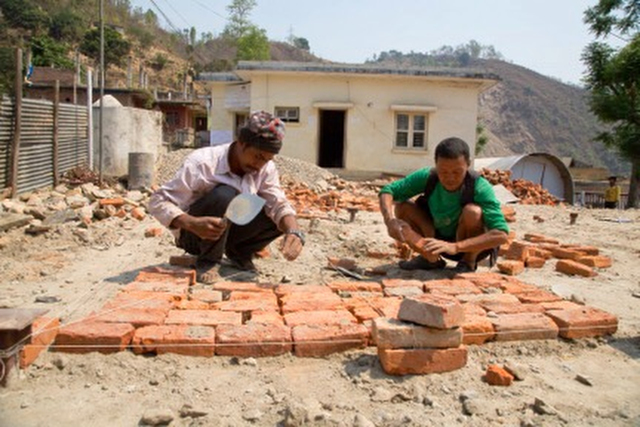
I woke up on April 6, 2016 in Kathmandu, Nepal. I was there on the first anniversary of the 7.8-magnitude earthquake that rocked the Asian country. The quake killed over 9,000 people, injured an estimated 22,000, and left three-quarters of a million homeless. I wanted to assess the progress of the reconstruction efforts there and connect with Santa Barbara organizations that were doing the same.
My phone call with Karma Bhotia was brief. He would meet me in the lobby of my hotel in the capitol Kathmandu’s Thamel district. Karma is the owner of the Himalayan Kitchen restaurant in Santa Barbara. We found ourselves in Nepal at the same time, both to assess the rebuilding efforts of the country.
Now a middle-aged, small-framed man wearing wire-rimmed glasses, Karma was raised in the small farming community of Chyamtang near the Tibetan border. Life was a struggle there. “I never had a full stomach,” he said. “I was always hungry. When I remembered this, I wanted to do something for others. We have a responsibility to pay back to our community.”
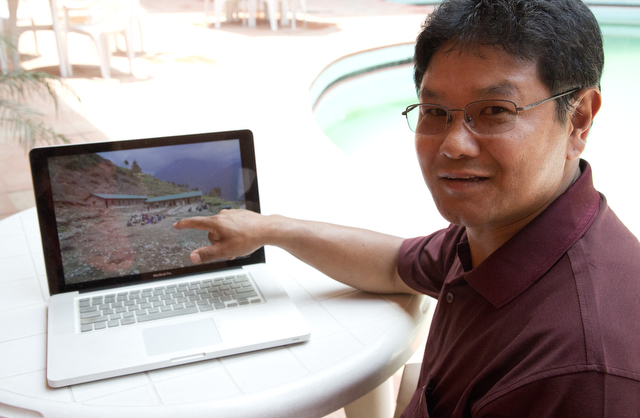
Karma was fortunate. He was given an opportunity to finish high school, only the third person from his village to do so. He worked in the tourist industry as a trekking guide for 15 years. Eventually he was able to get a sponsor and traveled to Austria, where he trained as a chef for eight years. Finally he and his wife Jyamu decided that America held the best opportunity for their family. They immigrated to the United States in 2000.
Karma is a soft-spoken man, but his deep passion to help his country is palpable as he talks about the Karma and Jyamu Bhotia Foundation. He and Jyamu started the foundation with the intent of promoting education in their home region. Their village is so remote it can only be reached by a 45-minute plane flight from Kathmandu, a four-hour jeep ride, and a six-day walking trek.
The Bhotia Foundation’s initial project entailed building the first public library in the nearby Lingam region. Next they built a school in their home village despite its remote location. They built sustainably, using stone and wood from the surrounding area, and purchasing only tin for the roofs. They employed village laborers. The Bhotias funded the project through personal contributions, donors, and local drives. The nine-room school is now a reality, and classes will begin soon. The couple also implemented a school lunch program in hopes that no child goes hungry.
After assessing the needs of the community, they funded a day care program for children whose parents work the fields. The couple is trying to provide nutritious food and education for their village. “These are the future leaders of this generation,” explained Karma.
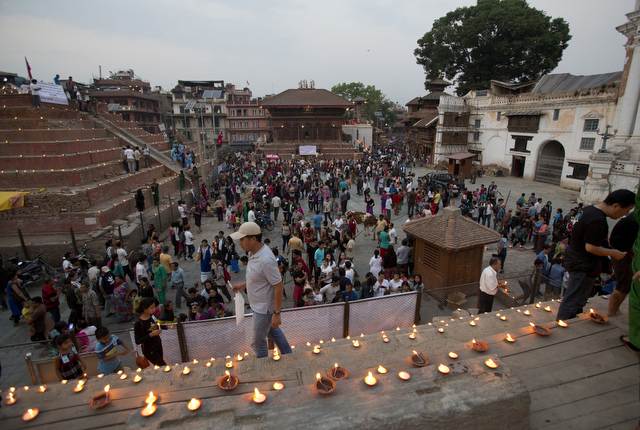
Of the day the earthquake hit, Karma said, “We were visiting family and traveling in southeastern Nepal. Buildings were shaking and people were in the road crying and screaming looking for loved ones. The roads were blocked by landslides and large cracks in the pavement.” At 11:57 a.m., April 25, 2015, he found himself trapped in southeastern Nepal, struggling to get to Kathmandu. “I was in shock, I was paralyzed,” remembered Karma. At that point, the foundation’s efforts expanded, and he found himself mobilizing disaster relief.
Karma was informed by local connections about a community outside of Kathmandu where 80 percent of the houses had been demolished. No one had come to help. He mobilized his community in Durango, Colorado. “We need to do something for Nepal,” he told them. The foundation raised $33,000 through donations. With these funds, it provided the village of Kharhare with 63 temporary tin-roofed shelters, 12 toilets, and three water sources. To date, the foundation is still organizing aid to bring that village back to normalcy.
When asked what kind of relief efforts the government has provided since the earthquake a year ago, Karma said emphatically, “Zero — zero progress for rebuilding in Nepal. They don’t see that small things can change to big.”
Communities are doing the rebuilding themselves. “We don’t have to wait for the government,” explained Karma. “Volunteers, they are not wealthy, they are wealthy here in the heart,” he said gesturing to his chest and bowing his head. The Bhotia Foundation continues to raise funds for long-term projects in the villages of Chyamtang and Kharhare.
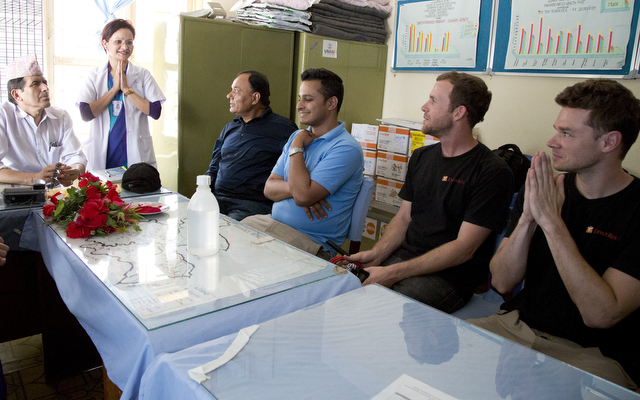
Dan Hovey, Emergency Preparedness and Response Coordinator of Direct Relief — a medical nonprofit organization based in Goleta — was also in Nepal doing a one-year aid relief assessment. After the earthquake, Direct Relief mobilized the largest disaster response in its history. In total, the organization delivered 55 tons of medical supplies to the country and raised $6,559,066 in cash donations for the earthquake relief effort.
I traveled with Hovey to the Mahadevesi Birthing Center south of Kathmandu. There we met Nirmala Kharel, an auxiliary nurse midwife who was in the clinic the day the earthquake struck.
“The building started to shake then started to go down around us,” Kharel explained. She was performing a prenatal checkup at the time. “We ran away and then the building slipped several meters and collapsed. Several old buildings close by also collapsed.”
“We couldn’t take anything out of it [the clinic]…we had no electricity, no phone. It was raining. There were many aftershocks. We were forced to work out of a tent. After the earthquake, it was tragic…lots of injured people,” recounted Kharel.
The birthing center was completely destroyed. The staff served the community out of a tent for 15 days after the earthquake. They eventually moved to the outpatient room of the main clinic, which they used as their only treatment room. The birthing center is in the process of being rebuilt.
One Heart World-Wide (OHWW), Direct Relief’s overseas partner in Nepal, came to the clinic to assess its needs. Supporting maternal and neonatal health in rural areas, Direct Relief has been supplying the clinic with financial and material assistance for over ten years.
“They told us to give them a list [of needs], and they provided it,” said Kharel. Through OHWW, Direct Relief gave the clinic solar lighting equipment. “Before that we were doing births by candlelight,” explained Kharel.
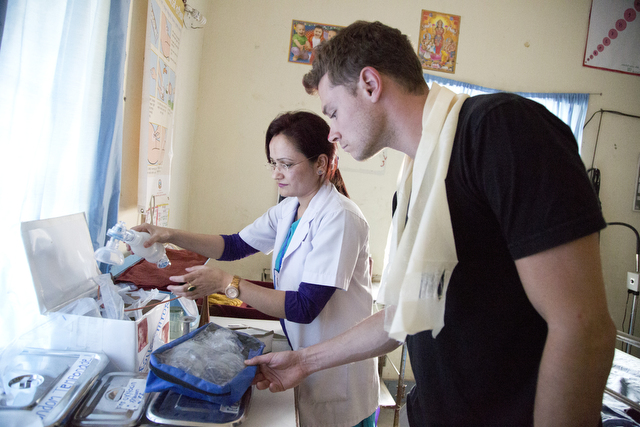
Direct Relief also supplied birthing kits that can accommodate 50 deliveries, disposable supplies that don’t need to be sterilized, reproductive health care kits, a delivery bed, blankets, and a fetal Doppler that can be charged by the solar light kit.
The Doppler is now being used instead of outdated technology to listen to a baby’s heartbeat. “The fact that they, [the patients], can hear the beat of their baby’s heart makes them come into the clinic to get checked out,” exclaimed Kharel. The clinic has seen an increased number of patients.
One of the most impactful contributions Direct Relief has made to Nepal is sponsoring a Skilled Birth Attendant (SBA) program through OHWW. The nonprofit provided a grant to train graduates who act as midwifes and specialize in prenatal and postnatal reproductive care. So far, around 40 nurses have graduated from this program. Most are working in rural birthing centers in the Dhading District.
Kharel graduated from the program eight months ago. To date, she has conducted 60 deliveries. Now she is able to handle prenatal and postnatal checkups, breech and vacuum deliveries, and postpartum hemorrhages, as well as identify preeclampsia cases. According to Kharel, “Now with the SBA training, I can handle this medicine and the patient can deliver the baby near the home…I can save mothers and babies lives.”
Direct Relief’s assessment team continued on to visit a brand new birthing center in the village of Maidi. That clinic was built by OHWW with funds from the nonprofit. The team stayed on the ground for a week meeting with partner hospitals and clinics and assessing past successes and future needs. The organization continues to supply to the Nepali people medical supplies, equipment, and cash grants that are distributed to locally run Nepalese partner organizations.
The earthquake has heavily impacted Nepal. According to the country’s National Reconstruction Authority, 770,000 families were rendered homeless and only 700 have received 200,000 Nepalese Rupees, (around $2,000 USD) from the government for reconstruction. Seven World Heritage sites and 473 religious sites were destroyed, with restoration and rebuilding possibilities questionable and slow to start.
The majority of the people I talked with were very disappointed in the Nepalese government’s relief efforts. Donations have topped $4.1 billion, but distribution to the people has been slow in coming.
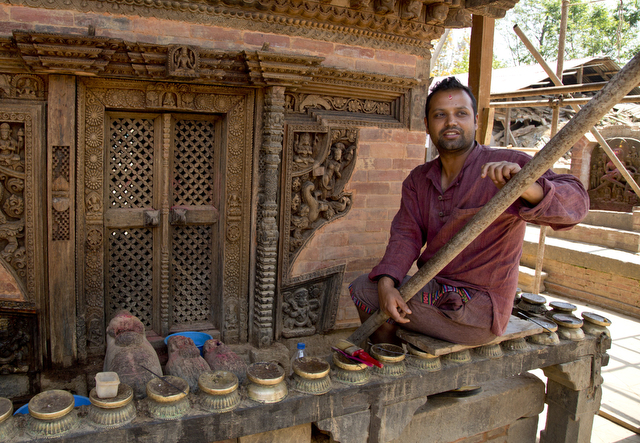
Reim Prakash Bhatta, a priest of the Shiva Temple at Changu Narayan Hindu Temple, was in the temple praying when the earthquake hit. “Our life is no more,” said Bhatta. “I was afraid for that temple.” Now the temple is being restored with a grant from the German government.
Bhatta’s coworker, Urmila Bhadil, lost her five-year-old son in the earthquake when a nearby building collapsed. A year later, she is pregnant again and has a job restoring the temple.
The Nepalese people are the country’s greatest natural resource. They are resilient in the face of tragedy and disaster. Communities are coming together to rebuild their villages. With the help and support of organizations like Direct Relief and the Karma and Jyamu Bhotia Foundation, a successful recovery is on the way.
For more information about both organizations’ efforts in Nepal, visit their websites:
Carmen Smyth is a freelance journalist based in Ventura County. Recently, she traveled to Nepal to document the first anniversary of the April 2015 earthquake and two Santa Barbara organizations’ ongoing recovery projects in the country.



